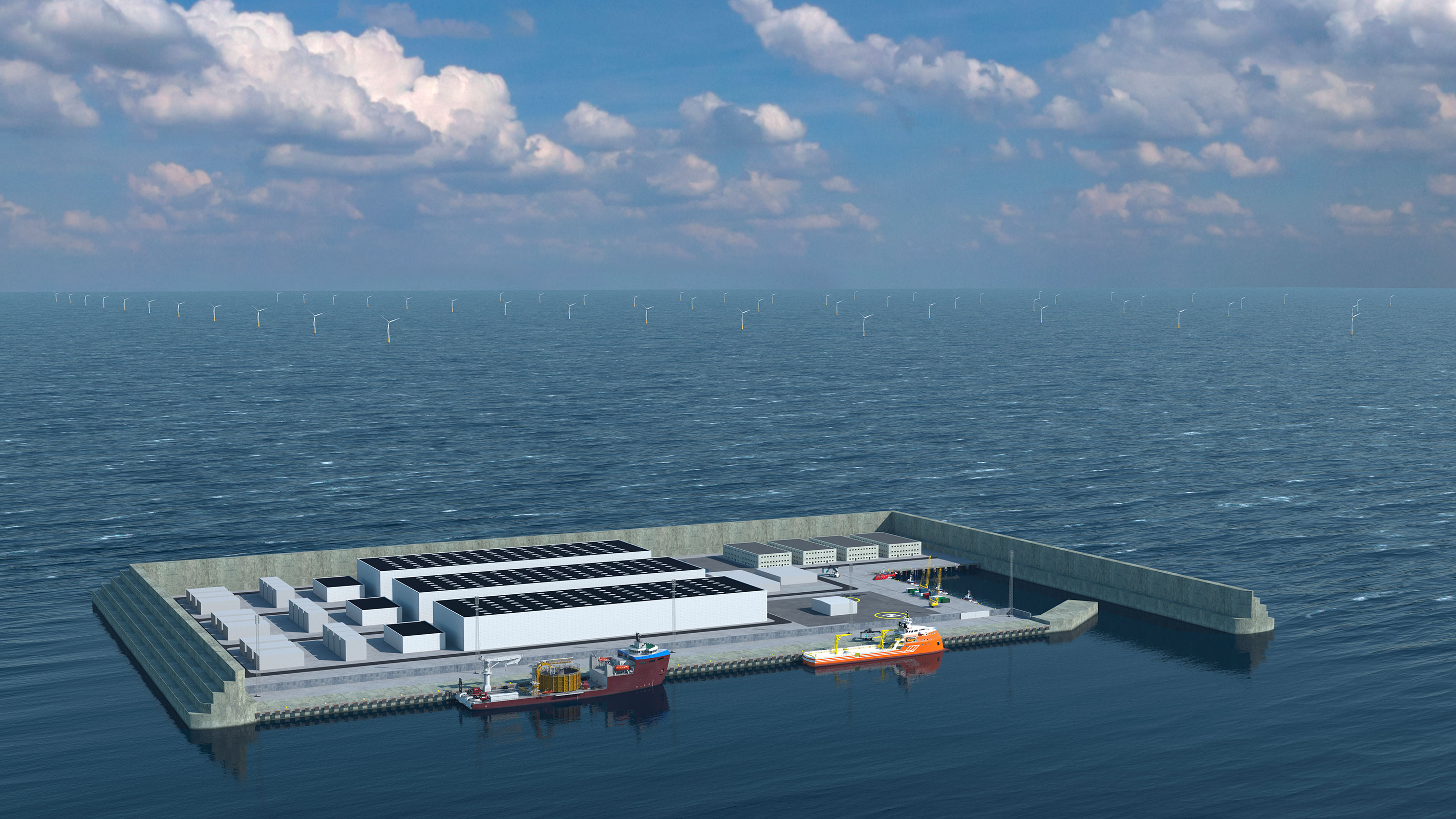A press release by the Ministry of Climate, Energy and Utilities:
Denmark has reached a landmark agreement on the construction of an energy hub in the North Sea. The energy hub will be an artificially constructed island 80 kilometers from the shore of the peninsula Jutland. It will be owned by a public-private partnership. The hub will strengthen the integration of Europe’s power grids and increase renewable electricity production necessary for a climate neutral Europe.
Denmark has introduced cutoff date of 2050 for oil and gas extraction in the North Sea and canceled all future licensing rounds. Today, by agreeing on the construction and ownership of the world’s first energy hub in the North Sea, Denmark takes another significant step in the green transition. The energy hub will produce yet unseen amounts of green electricity and is one of the government's flagship projects for the green transition in Europe. Fully implemented it will be able to cover the consumption of 10 million European households
”This is truly a great moment for Denmark and for the global green transition. This decision marks the start of a new era of sustainable energy production in Denmark and the world and it links very ambitious climate goals with growth and green jobs.The energy hub in the North Sea will be the largest construction project in Danish history. It will make a big contribution to the realization of the enormous potential for European offshore wind, and I am excited for our future collaboration with other European countries”, says the Danish Minister for Climate, Dan Jørgensen.
The energy hub will serve as an offshore power plant gathering and distributing green electricity from hundreds of wind turbines surrounding the island directly to consumers in countries surrounding the North Sea. The island is expected to have a total area of at least 120.000 square meters and in its first phase it will be able to provide 3 million European households with green energy.The project will be a public private partnership between the Danish state and private companies. The State will own the majority of the island, but private companies will be crucial for the project to fulfill the potential as regards to innovation, flexibility, cost-effectiveness and business potentials.
“We are at the dawn of a new era for energy. Last year, Denmark set a cutoff date for fossil fuel extraction. Today we are taking a decisive step toward a clean energy future. The EU has set a goal to achieve climate neutrality by 2050 and the Commission has set a target of 300 GW offshore wind energy in order to attain this goal. By constructing the world’s first energy hub with a potential capacity of 10 GW, Denmark significantly contributes to this ambitious target. Not only by dramatically expanding renewable energy production, but also by supplying our European neighbors with an abundance of renewable energy”, says the Danish Minister for Climate, Dan Jørgensen.
The artificial island will offer the best opportunities to expand the project, for example by building a harbor and facilities for storage and conversion of green electricity from the nearby wind turbines in the sea. It is the long-term ambition to be able to store green electricity on the island, convert it to liquid green fuel, and send it via subsea cables to Denmark and neighboring countries.
Details about the ownership of the island will be specified in order for a tender for private partnerships to be opened, making the island a reality as soon as possible.
Read more about the energy islands.
Read the fact sheet about energy hubs on kefm.dk.
Facts about the energy islands
- A broad coalition of Danish parties have decided to establish two energy hubs and associated offshore windfarms. One as an artificial island in the North Sea and one at the Danish island Bornholm.
- An energy hub serves as a hub that collects electricity from the surrounding offshore windfarms and distributes the electricity between countries connected via the electricity grid.
- Furthermore, the abundance of offshore wind energy can be used to produce climate-friendly fuels for shipping, aviation, heavy industries or heavy-duty vehicles.
- The two hubs initial capacity will be 5 GW triple the current installed offshore capacity in Denmark. Later they will be expanded to provide a capacity of 12 GW in total.
- In the North Sea, the island and offshore windfarms will be located at least 80 km west of the coast of Jutland. Around 200 wind turbines are expected in the first phase of the project.
- Last year Denmark reached a deal on the future of fossil extraction in the North Sea, leading to the cancellation of the ongoing 8th licensing round and all future rounds to extract oil and gas.
- The deal also established a final phase-out date of fossil extraction by 2050 and laid out plans for a just transition of impacted workers.
- Denmark is currently the largest oil producer in the EU, and it is the biggest producer worldwide to establish a final phase-out date so far.
Press contact:
Press advisor, Danish Minister for Climate, Energy and Utilities, Emil Lee Madsen (emlma@kefm.dk), phone (+45)41 72 90 58
Contact in the Danish Energy Agency: Head of Media Relation Ture Falbe-Hansen, cell: +45 2513 7846, mail: tfh@ens.dk.
